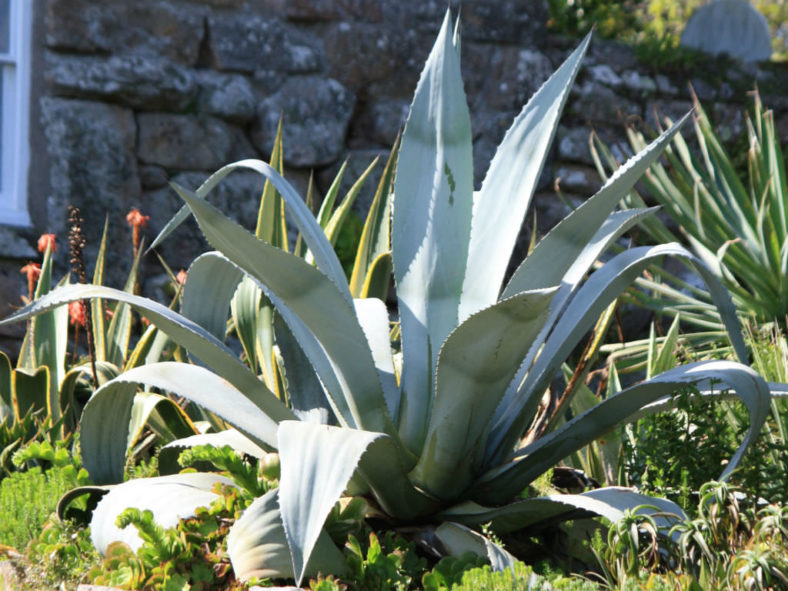Agave americana, commonly called the Century Plant, is a succulent plant native to Mexico. It can grow outdoors year-round in USDA Plant Hardiness Zones 8 to 10. It is the largest of the Agaves. The rosettes grow from 5 to 7 feet (1.5 to 2.1 m) tall and 8 to 12 feet (2.4 to 3.6 m) in diameter. Century Plant makes a dramatic accent plant with its blue or blue-gray leaves, black spines, and showy, yellow-green flowers. Despite its renowned hardiness, Century Plant can still suffer from a few cultural, disease, and pest problems.
Cultural Problems
Century Plant can tolerate various cultural conditions as long as it is planted in fast-draining soil. Poorly draining soils make the plant susceptible to fungal pathogens that cause root rot. This Agave can survive down to 15°F (-15°C), but the broad, fleshy leaves will suffer from freeze damage if the temperature drops below freezing for several hours. Freeze-damaged tissue turns black, dries out, and looks unsightly. The damage can not be repaired, but most Century Plants will recover. Prevent freeze damage by covering the plant with a light cotton sheet when your area is expected to freeze.

Diseases
Although the Century Plant is not associated with severe disease problems, root rot can be a problem in poorly draining or overly moist soils. Root rot causes wilting, stunted growth, and leaves that discolor. Unfortunately, this fungal infection cannot be treated once it occurs. Anthracnose is another occasional problem when fungal pathogens thrive in overly moist soil conditions. This disease causes lesions on the leaves, with red or orange spore masses developing inside the sores. Remove any anthracnose-infected plant tissue promptly to prevent the disease from spreading.
Pest Problems
For the most part, Century Plant does not have serious pest problems, but there is one exception. Root rot typically goes hand in hand with Agave snout weevil infestations. Adult females chew on the plant's base to lay eggs in the infected plant tissue. The larvae hatch and burrow their way into the heart of the plant. Severely infected Century Plants look wrinkled or shriveled and emit a foul odor. The rotting plant tissue eventually collapses, and the plant dies. Controlling the Agave snout weevil is difficult, but spraying the plant's base with a broad-spectrum insecticide in the spring can often help prevent infestations.
Recommendations
Avoid Century Plant problems by providing your plant with the best possible growing conditions. Although it can tolerate some light shade, this succulent performs best when planted in full sun. Century Plant grows best in sandy or gritty soils with dry to medium moisture. This drought-tolerant plant only needs occasional watering in dry summer weather to remain healthy. Give the plant plenty of room to grow and ensure it is planted away from foot traffic. The sharp spines can poke you and cause your skin to swell painfully.
Source: sfgate.com
Links
- Back to genus Agave
- Succupedia: Browse succulents by Scientific Name, Common Name, Genus, Family, USDA Hardiness Zone, Origin, or cacti by Genus